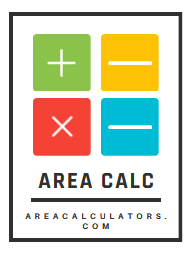Everything with mass has energy — from the atoms in your hand to stars in distant galaxies. But how much energy is locked inside a small amount of mass?
The E=mc² Calculator gives you the answer. Using one of the most famous equations in science, it lets you convert mass into energy instantly and accurately.
Whether you’re a student, teacher, or simply curious, this tool reveals the incredible power within matter — turning theory into numbers.
What the E=mc² Calculator Does
This calculator uses Einstein’s mass-energy equivalence to compute how much energy is stored in a given mass. You just need one input:
-
Mass (in kilograms)
The calculator returns:
-
Energy (in joules)
It’s perfect for:
-
🔬 Physics education
-
⚛️ Nuclear science
-
🌍 Energy theory studies
-
🚀 Understanding mass-energy relationships in space and tech
Formula and Variables for E=mc²
E=mc² is one of the simplest yet most powerful equations in physics.
Mass-Energy Equivalence Formula
Contents
E = m × c²
Where:
-
E = Energy (in joules)
-
m = Mass (in kilograms)
-
c = Speed of light (approximately 299,792,458 m/s)
It shows that mass and energy are two forms of the same thing. Even a tiny mass holds immense energy because c² is a huge number.
📊 Variable Table
| Variable | Meaning | Unit |
|---|---|---|
| m | Mass | Kilograms (kg) |
| c | Speed of light | Meters/second |
| E | Energy stored in mass | Joules (J) |
🔢 Example Calculation
Let’s say we have 0.01 kg of mass (about 10 grams):
E = 0.01 × (299,792,458)²
E = 0.01 × 89,875,517,873,681,764
E ≈ 898,755,178,736,817 J
That’s over 898 trillion joules — from just 10 grams of matter. Enough to power a city for hours!
How to Use the E=mc² Calculator
-
Enter Mass (kg) – Input the mass you want to convert
-
Click Calculate – The tool uses the fixed value of the speed of light
-
View the Result – Energy output in joules
-
Use for Learning or Analysis – Apply the result in studies, presentations, or science demos
No manual formula work needed — just input and get your answer instantly.
Where the E=mc² Calculation Is Used
⚛️ Nuclear Reactions – Calculating energy released in fission or fusion
🌞 Astrophysics – Understanding how stars shine and collapse
📚 Physics Classrooms – Teaching the link between mass and energy
🚀 Space Missions – Estimating power from matter-energy conversions
🔋 Theoretical Energy Research – Exploring limits of atomic energy
🧪 Lab Demonstrations – Showing Einstein’s equation in action
Anywhere mass meets motion, this equation matters.
Benefits of Calculating E=mc²
✅ Understand the power hidden in matter
✅ Make physics theory hands-on and numerical
✅ Explore the principles behind nuclear and solar energy
✅ Empower students with real-world science insight
✅ Show the foundation of modern physics in action
Small mass. Giant energy. Big learning.
Tips for Accurate E=mc² Calculations
✔️ Always use kilograms for mass
✔️ Let the calculator use the exact speed of light (already built in)
✔️ Results are in joules — convert to kilojoules or megajoules if needed
✔️ Remember: this gives maximum theoretical energy, not actual efficiency
✔️ Use scientific notation for large results
Precision matters — especially at the speed of light.
Common Misunderstandings About E=mc²
❌ “Only nuclear bombs use this formula.”
No — it applies to all matter, everywhere, not just weapons.
❌ “It’s too advanced for beginners.”
Actually, it’s one of the most understandable physics formulas.
❌ “Energy = mass.”
Not quite — energy equals mass times the square of the speed of light.
❌ “You can get this energy easily.”
Not practically — turning mass into pure energy requires special conditions.
❌ “E=mc² doesn’t affect daily life.”
It powers the sun, affects GPS systems, and defines atomic energy!
FAQs:
1. What is the E=mc² formula used for?
It’s used to calculate how much energy is stored in a given mass.
2. What units does the calculator use?
Mass in kilograms, and energy in joules (J).
3. Can I convert the result into kilojoules or megajoules?
Yes! Divide by 1,000 for kJ or 1,000,000 for MJ.
4. Does this apply to real-world energy extraction?
Partially. It's the theoretical maximum; real energy conversion has losses.
5. What happens if mass is zero?
Then energy is zero. No mass = no stored energy.
6. Is this related to nuclear energy?
Yes — nuclear fission and fusion release energy based on mass loss, calculated with this formula.
Conclusion:
The E=mc² Calculator turns one of science’s most powerful ideas into a practical, understandable tool. It reveals how energy and mass are deeply connected — in stars, in atoms, and in every part of the universe.
⚛️ Turn mass into meaning. Understand energy. Explore Einstein’s genius — one calculation at a time.
